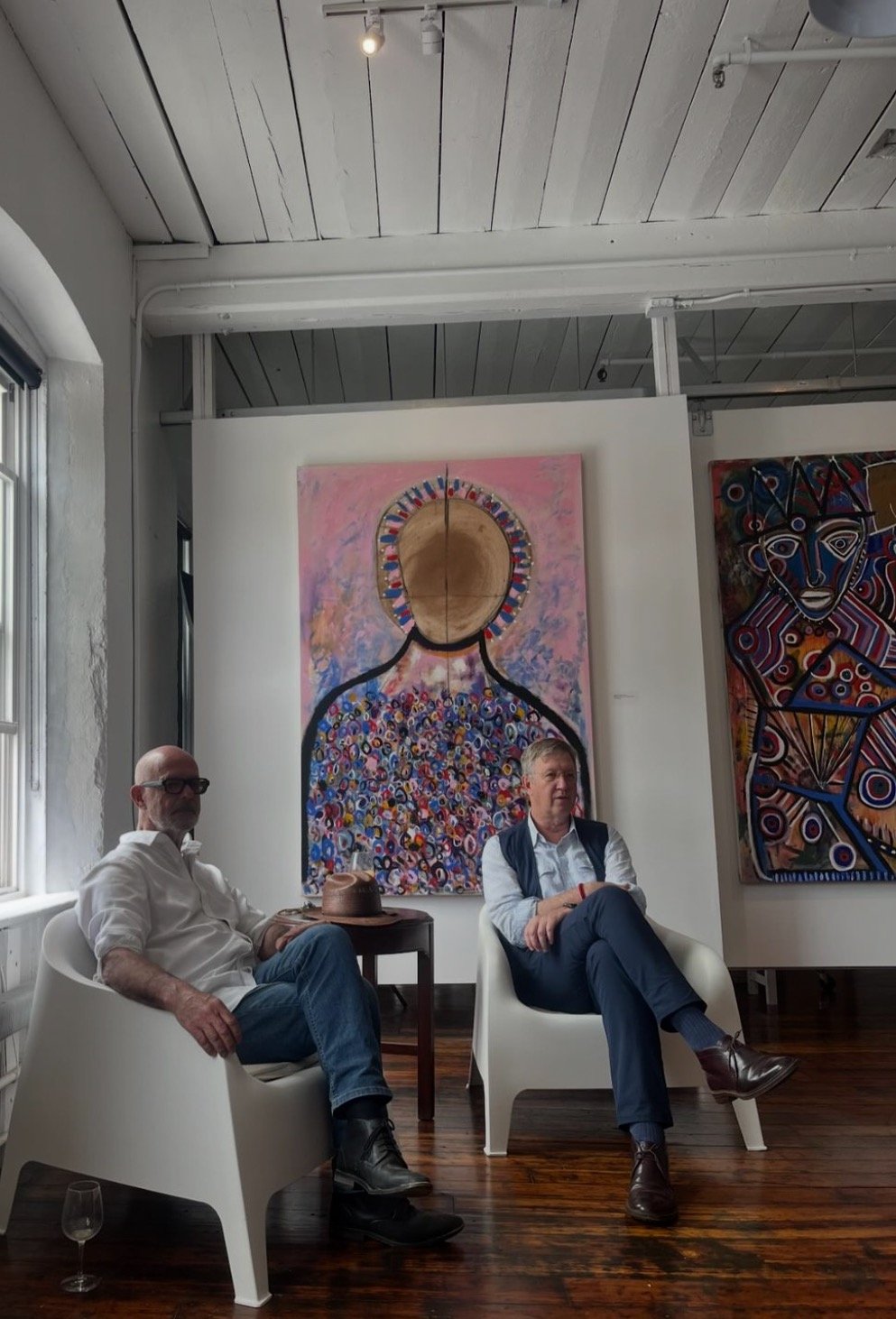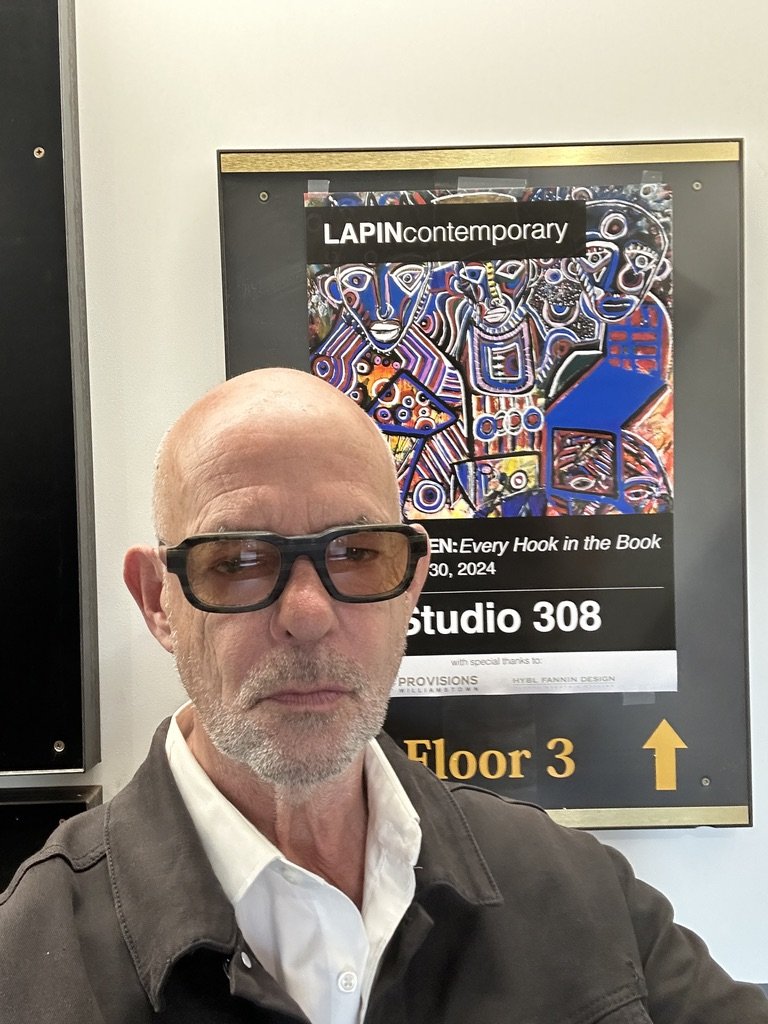ABOUT
Karl Mullen's palette is the larder: red wine, walnut oil and ink, Barry's tea, pastes in silver tins, powders like exotic spices. To watch Mullen paint is to watch a weird amalgam of line chef, body-worker, bartender and day laborer, each having sworn off the traditional tools of the trade. In his studio--the just barely heated, former horse stall of his 19th-century barn--he drops a fresh piece of 22" x 30" Arches paper onto the concrete floor. Standing over the paper, he pours two small circles of walnut ink, leans over to spit into each pool, watches the chemical sizzle for a moment or two, then crouches, nicking into each pool with the edge of a sharp-tipped palette knife, scraping away, pulling down strands of ink in curves and arcs. These gestures form the outlines and initial features of the human figures characteristic of Mullen's work.
Mullen discovers his subjects as he paints, surprising himself, restless. Some figures will have limbs that stretch in ways at once impossible yet familiar. Some will have rather more vestigial parts, like tadpole ancestors toward whom we feel inexplicably drawn. Rib-like lines may radiate from a spine, a torso may store organs of secret color. Mullen's figures wear hats or crowns, play instruments, balance odd packages. They may stand apart, listing toward one another or veering away. They may embrace with elastic, ecstatic arms. One body may subsume another. Their faces may tilt, dog-style, wondering, waiting. Around the figures Mullen may gouge curves and tracks, carving à la cuneiform.
A prolific artist, Mullen typically has dozens of paintings at varying stages of completion. Stacks of them lean against the rough-plank walls or lie in the shallow drawers of metal drafting cabinets. Clutter is everywhere; no surface is clear. A banjo sits on top of a bowl of bottle caps. A wooden crate of brushes and ink jars teeters on a djembe. When a mouse chews a hole in a painting, opportunities appear. Mullen's work is shown in galleries throughout North America and Europe, and in the annual Outsider Art Fair in New York. Like Dubuffet's art brut, of which "outsider art" is the English approximation, Mullen's paintings privilege the raw over the cooked, spontaneous process over studied composition, the iconic over the naturalistic, the primitive over the polished.
A painting at the initial ink-, wine-, and tea-stage will dry for a long as a month. When Mullen returns to it, he may add oil pastel detail or scoop from a silver tin of cold wax. Then he pours swirls of Graham's walnut oil to form the field of color upon which the figures are poised to move. Onto the oil he shakes generous amounts of Sennelier dry pigment (Picasso's brand), stalking around the paper, a distracted man, pacing. Then, pulling on gloves, he kneels to the floor and begins to rub, open palms smearing in circular motions, reaching with outstretched arm, massaging the fresh-mixed pigment into the very skin of the paper. He swabs the excess with a wadded rag. New bodies may surface. An orb may appear on the paper, rimmed by beads of light or shadow, signs of eclipses as yet undocumented by science. Tears may be shed by the radiant sky itself. Pressed up against the sky, a face may squint or smirk. Rambunctiousness is afoot. Ardor is always just around the corner.
true dat
Cassandra J. Cleghorn, Poet



